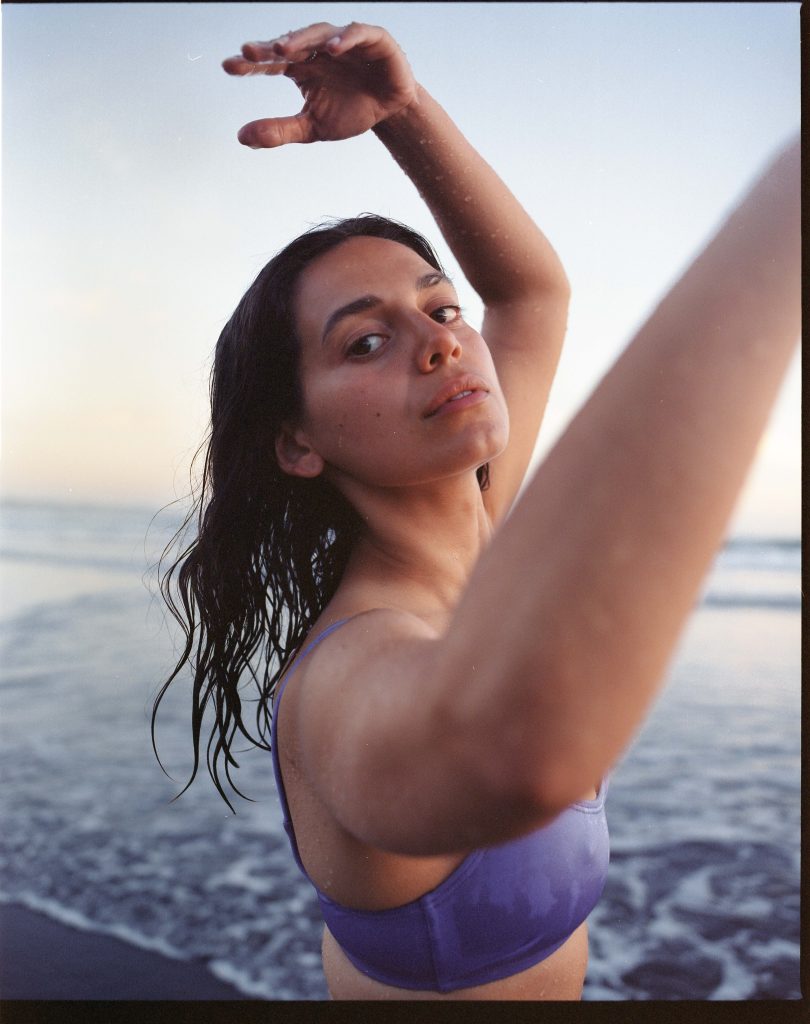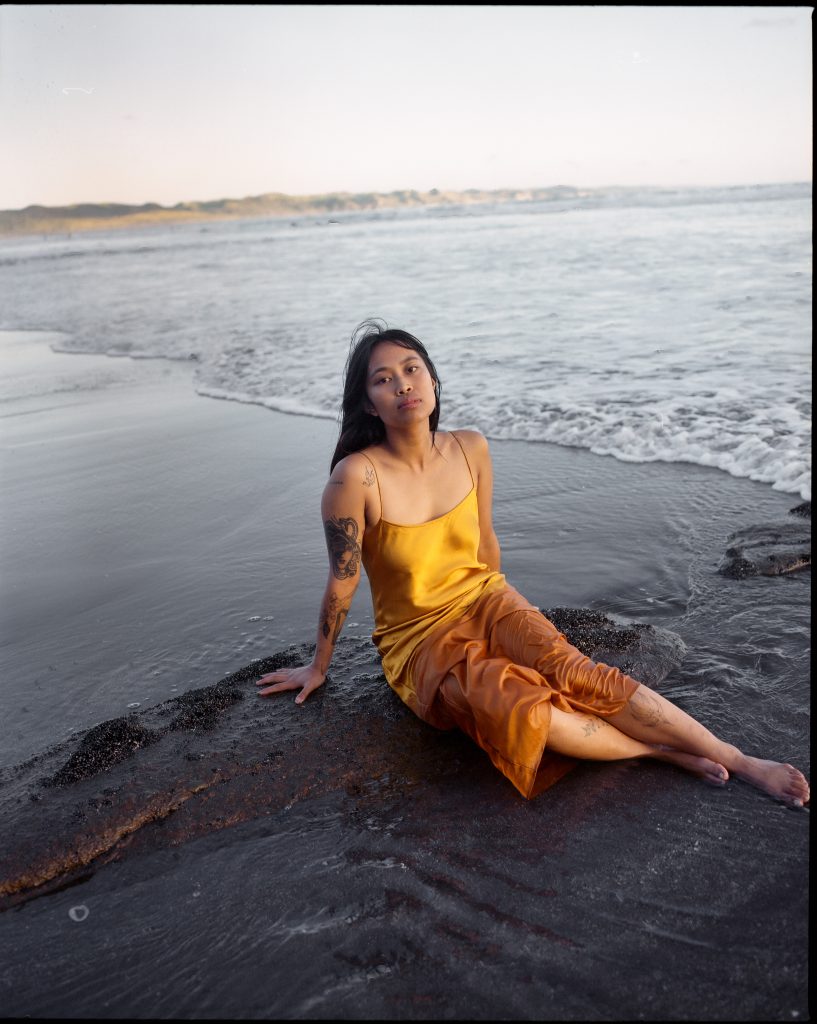Aotearoa NZ Photographers – Koa Thomas
In our ‘Aotearoa Photographers’ series we sit down with NZ based photographers to learn more about their photographic practice and how their photography career got started.
This week we chat with photographer, Koa Thomas, on creative influences and career journey. He shares with us what steps led to his first commercial gigs and how shooting with film, along with the beauty of Aotearoa landscapes, have helped develop his slow, considered approach to photography.
This article is sponsored by MyChillyBin.

Tell us a little about your background – what path led you to becoming a photographer, and to doing what you’re doing today?
My family are a pretty creative bunch in their own ways. My Grandad was an awesome drawer. My great uncle worked with oil painting. My nan’s partner, who is like my grandfather, is a talented landscape photographer. My mum is great with anything she puts her hands to. My uncles are creative in their own way, and my sister is an awesome photographer and artist. The list goes on.. The honest truth is I was probably the least talented out of everyone growing up.. I think I probably still am!
I think growing up in that environment helped shape my creativity. The house I grew up in had lots of diverse photography and art on the walls, which would be constantly switched around and rotated, depending on what my mum had picked up that week. A lot of the photos were incredible portraits taken on film of American Indians from the late 1800’s and early 1900’s. I remember we also had a lot of portraiture books lying around the house, a diverse group of photographers such as; Edward S. Curtis, Gregory Heisler, Mario Sorrenti and Sally Mann to name a few. I believe growing up looking through those books helped shape my work today.
There were also usually a lot of soulful voices playing through the speakers. Great music artists like Al Green, Marvin Gaye, Erykah Badu, Lauryn Hill, D’Angelo and so on. Being raised around this, I was exposed to a lot of different artforms, sounds and cultures. I remember often going through hundreds of CD cases and emptying out all the inlay cards to look at the creative direction of the albums. I feel that a lot of my direction and style was built a very long time ago from those foundational experiences. I’m very thankful for that.
As for my personal journey, I was mainly focused on art and design until I took a trip to India around 2011. I took a small digital point and shoot with me. I was on my own for almost 6 months, and that camera was a great way to help me engage with the local people. I really wanted to get to know people and hear their stories. After that trip, photography seemed to be the predominant path, as it allowed me to interact and engage with people in a way that other creative mediums did not.


Digital or film?
I prefer to shoot with film. My camera of choice is the Mamiya RZ67 Pro II
What would you say is the most challenging part of working with film for you?
I think I have become pretty comfortable and accustomed to working with film. I have tried to turn the more troublesome issues with shooting film to my advantage. For example, my medium format only shoots 10 frames per roll, so you can’t go firing off like you would on a digital camera. I see having a limited amount of shots as a good thing. It helps me to really consider and take the time to choose and set up my shots. I also feel that working at the pace that the medium format allows, helps the subject to relax, especially when doing portraits. I personally feel that there is something about using medium format that allows you to capture the soul of someone that a digital camera struggles to do.
How would you describe your photographic approach?
I am pretty militant with the pre-planning and organisation of any production. I feel this way I can be more free and creative on the day/s. The better planned the shoot or production is, the smoother it will go on the day. The shoot itself should be as free flowing, fun and creative as it can be.


From some of your featured work on your website, there’s a rawness and attention to texture that really shines through. Since moving to Aotearoa from the UK, has the natural landscapes and textures of NZ played a role in shaping your recent work?
Definitely. The landscape here has certainly played a role in the development of my photography. The land is so rich and bountiful here, that you would be crazy to not try and incorporate it as much as you could into your work. There is something about the colours and textures in Aotearoa. The way the light hits off of different objects here is very captivating and I try to use that to my advantage as much as possible. I think the thing I love most about Aotearoa is the raw beauty and simplicity here. It has really helped me to slow down and appreciate nature and the simple things in life. I will be forever grateful for the lessons in that experience.
What’s your favourite thing about photographing people? How do you get them to look so comfortable in front of the camera?
I like to chat to people for a while and get to know them. You can usually find some common ground with anyone, no matter how different you might appear to be from each other. I have always been very interested in people in general, and am always interested in learning more about them. I think it’s important to create a real genuine relationship in some way with who you are working with. If you can’t do that, you are not going to be able to capture the essence of who that person is. I like to try and capture those ‘in between’ candid moments as much as possible. I think I am constantly seeking to capture a genuine response in my work.



Looking back to your earlier career, how did you start landing your first commercial gigs and what have you learned since then?
After finishing University in the UK, I flew back to Sydney and began an internship at a photography studio. Shortly after starting the internship I was offered a job as a designer at a creative communications agency. I took the job and ended up juggling both the studio and agency work, working 7 days a week. A lot of my initial commercial work came through those jobs. Usually it would be hair and makeup artists and stylists from the photography studio, and the PR department and senior creative leaders at the creative agency, who would pass my details on to clients and brands looking for a photographer.
I would say that back then, a lot of my ambition was directed towards being a photographer and to become established in that area. Nowadays I am far more relaxed about that. My priorities have changed since then. I prefer to live rurally by the ocean than in a city and I have slowed things down a lot. I have found this pace of life has created a lot more opportunity for me to experiment with my photography. However, the consequence of not living somewhere with more commerce is that you do lose those contacts and therefore tend to get less work. But that’s the trade off. Life is about balance, and for now I am happy to make that compromise.
How do you see your photography practice developing, what are your main aspirations for the next couple of years?
Right now I am focused on being present and enjoying the experiences I have in these moments. Having aspirations feels a little counter intuitive when you are working on that mindstate. The more I let go, the happier I seem to be with my work.
I’m not sure when, but I do plan on moving back to Europe where there is a little more infrastructure at some point. I hope to strike a balance with being able to live rurally, and still having consistent work in photography. Europe is such a beautifully diverse place with its food, culture, languages, arts and fashion. I look forward to being back amongst that when the time feels right.
Lastly, how can people get in touch or see more of your work?
You can contact me via email at thekoathomas@gmail.com and view all new work on koathomas.com. I am slowly backing away from all social media, but for now you can also find me on IG as koa_thomas




